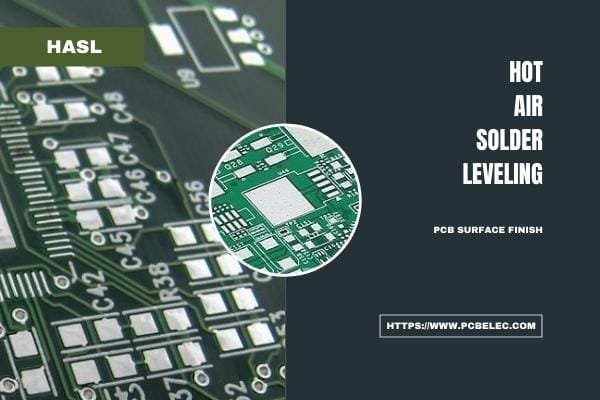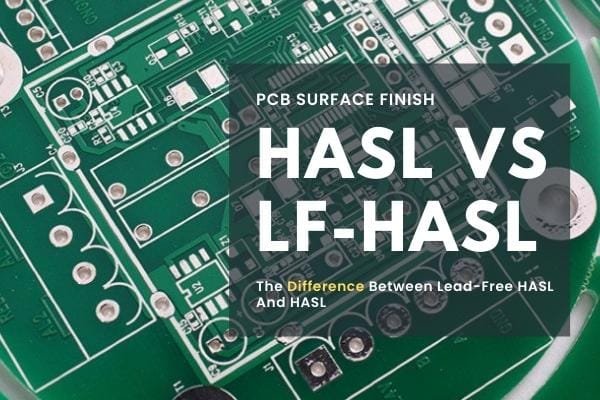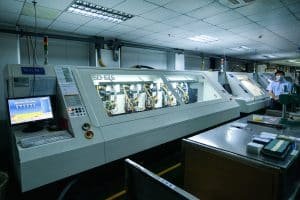As electronics seem to be evolving over the years, that is how manufacturers of these appliances/devices are looking for ways to come up with the best circuit boards that can withstand unfavorable conditions. To achieve such feat, various forms of PCB (printed circuit boards) surface finishes are used. One of such has been Hot Air Solder Leveling (HASL).
In case you are wondering what this is all about, ensure to read the details of this post from start to finish. It will be revealing some important details about Hot Air Solder Leveling. In the end, you will be in a good position to decide whether this is worth using in modern electronics or not.
What Is Hot Air Solder Leveling?
It is a surface finishing technique that is metallic. The printed circuit board’s outermost is where it is performed to ensure protection of exposed copper surfaces until there is completion of component placement as well as soldering. HASL usually has 3 components. These are solder, tin (37%) and lead (63%). It is the soldering that gets this coating dissolved during the assembling process. You can also view HASL as a kind of surface finish. The process involves a layer of solder getting deposited in the form of thin coating on a PCB’s exposed copper.

After the application of the solder mask, the board is going to be dipped into a molten solder bath. This usually helps in bonding any kind of copper. It should be noted that the formula or combination of lead and tin isn’t that popular again during hot air solder leveling. This is because companies are now beginning to focus on a process that is 100% lead-free in a bid to comply with regulations of REACH and RoHS. The popularity of HASL can hardly be overemphasized. For years, it has been used on printed circuit boards because of its high level of reliability and how it tends to produce the perfect solderability. Apart from that, it has been known to produce very stable end finishes.
According to most experts, this is a tested and proven way to produce printed board finishes that are of the highest quality. Despite circuit boards becoming increasingly complex and technical, it has managed to stand the test of time. This is because it is a combination of reliability and cost-effectiveness.
What Is The HASL Process?
For an HASL finish to be created, the PCB is going to be submersed into molten solder (lead/tin). Every surface of the copper that is exposed will be covered by such solder. Air pressure which is very high will be blown over such surface once it is retracted from the solder. This is usually done through the use of air knives. The major purpose of this is to ensure the solder deposit is levelled. In other words, excess solder will be removed from such surface. Here are detailed steps on how this process is carried out.
Process 1
In this stage, the printed circuit board (PCB) is immersed into a molten lead/tin solution. All the exposed copper areas are expected to be covered by such a solution.
Process 2
Once the above process has been completed, the next is using a hot air leveler. This is usually to ensure the solder deposit is uniform. In other words, such a deposit will be leveled using air knives to remove excess solder. This has one major purpose. It is to ensure the layer on the board is thin as well as uniform. Through the coating, the copper traces are going to be protected from corrosion.
In simple terms, Hot Air Solder Leveling (HASL) usually has about 5 stages before it can be completed. These are preclean à preheat à solder + lead/tin coatingà air knife leveling à post-cleaning.
As you can see, post-cleaning is the last stage whereby the surface is going to be thoroughly cleaned to ensure unwanted particles are removed.
What Are The Advantages of HASL?
As said above, HASL has become very popular in recent times as it is used by most companies. This is due to the numerous advantages that it has been discovered to have. Some of these will be highlighted and briefly explained below.
If you don’t know, hot air solder leveling has been the industry’s standard. This is not a new practice. Instead, it has been used for years by companies that manufacture circuit boards. The implication of this is that it has always proven to be a reliable method.
There is no complication about hot level solder leveling. The processes are simple to carry out that even if you are not used to PCB fabrication, it can still be completed successfully.
When hot air leveling is applied on circuit boards, they are always expected to last much longer. This is probably the reason why it has been very popular when it comes to fabrication of PCB in recent times. It is one of the most reliable ways of extending the lifespan of PCBs.
You will agree that there are various forms of PCB surface finishes in the market. However, most of them are quite expensive. It is quite amazing to know that despite its benefits, hot air leveling is very affordable.
Not every PCB surface finish is re-workable. Some are very rigid up to the extent that once they have been worked on before, making any possible adjustment will be almost impossible. There is no need to bother because HASL is different. It has proven to be very flexible thus reworkable.
With hot air solder leveling, there is reduced chance of PCB failure. There are lots of problems that can occur when PCB fails during the manufacturing process. This can bring about problems like short circuits, crossed signal lines, and open circuits. With HASL, all of these problems will be nonexistent. It makes printed circuit boards to function as expected.
What Are The Disadvantages of HASL?
Just as HASL has advantages as mentioned above, that is how it also comes with some disadvantages which you must know. Some of them will be discussed below.
The surfaces produced lack uniformity. This is probably one of the most notable disadvantages of hot air leveling. It is quite difficult to get uniform thickness across panels as compared to what other surface finishes can offer. Again, using it on fine pitch components isn’t ideal. Furthermore, there is also the issue of PCBs being affected by high temperatures. It is recommended that solder temperature is a little lower. Whenever printed circuit boards are subjected to extreme heat, they can become damaged due to being stressed. This means they will no longer become reliable as expected.
Apart from these problems or shortcomings of HASL, some other disadvantages are poor wetting, they are not good for the plated-through holes, and thermal shock. Whatever the case may be, the truth still remains that its advantages outweigh the disadvantages to a great extent.
What Is The Difference Between Lead-Free HASL And HASL?
As mentioned earlier on in this post, there are two categories of hot air solder leveling. You have the normal or conventional hot air solder leveling and the lead-free hot air solder leveling. Each of them tends to differ in terms of features and functionalities.
For instance, lead-free HASL is used in replacing the conventional HASL. In other words, it used whenever a RoHS-compliant circuit board is being built. Again, they are different in terms of solder components being used. The lead-free HASL contains 99.3% of tin and 0.6% of copper. However, for the normal HASL, the combination is 33% tin and 67% lead.

For lead-free HASL, the alloy seems to have a melting point that is higher as compared to that of the leaded HASL. The implication of this is that there has to be a slight modification/adjustment in the soldering process. Another major difference between both is that in a lead-free HASL, the laminate material used must have a high temperature. Anything short this means it is a normal HASL.
Having seen the above, it is very clear that there are lots of areas or aspects where lead-free HASL and leaded HASL tend to differ. The project you are trying to execute will determine which one can be used on circuit boards.
Final Verdict On Hot Air Solder Leveling
There is no doubting the fact that you have understood everything about hot air solder leveling (HASL) including the process of carrying it out. This technique for surface finish has proven to be very reliable over the years. It is the reason why many manufacturers of electronic devices rely on it. Just as said above, it has disadvantages but there are lots of advantages that you can benefit from. The implication of this is that it will always remain relevant in years to come within and outside the industry.
Related Reading
Recommended Posts
The Cheapest PCB Prototype Manufacturer-Your Best Choice
Get affordable cheap PCB prototypes fast from the best low-cost manufacturer. We provide quickturn, low volume PCB prototyping service with top quality at competitive prices.
What is the risk of using an out-of-expiration PCB?
Printed circuit boards have their own shelf life, and we need to use them up as soon as possible within their shelf life. Printed circuit boards that have exceeded the recommended shelf life will cause severe quality problems, especially for PCB assembly.
The Benefits of Using Double Sided PCBs
Double sided PCBs unlock more layout space, reduce layers, improve signal integrity & offer flexible arrangements. For rapid prototyping, dual layer boards accelerate progress.
Aluminum PCB Prototype: The Ultimate Guide for Engineers and Designers
Aluminum PCB prototypes offer superior performance and reliability compared to traditional FR4 PCB prototypes. This blog post provides you with the ultimate guide to aluminum PCB prototypes, covering everything you need to know from their definition and advantages to their applications and how to choose the right manufacturer.
Flexible PCB Cost: Why It’s More Expensive and How to Reduce It
Flexible printed circuit boards (flexible PCBs or flex circuit boards) offer unmatched form factor benefits but come at a premium price compared to rigid PCBs – the average flexible PCB cost is 5-10 times higher due to expensive base materials like polyimide, complex manufacturing processes, and customizations like stiffeners and controlled impedances. However, there are ways to minimize flexible PCB pricing, such as reducing layer counts, ordering in higher volumes, simplifying designs with less drilling, and using rigid-flex combinations which can substantially cut costs. Careful design choices allow taking advantage of flex circuits’ compact nature without overpaying. This guide explains the key cost drivers behind flexible circuit board pricing and provides actionable tips to reduce expenses when specifying flex PCBs for your next project.
Big news! DuPont announces the acquisition of Rogers.
DuPont Announces The Acquisition Of Rogers.











